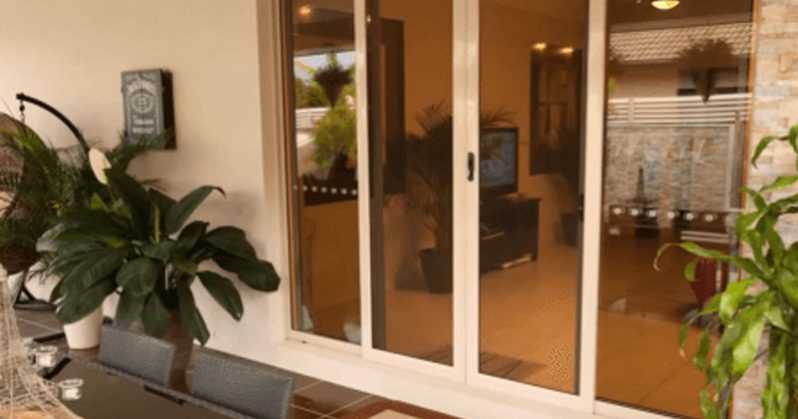
Aluminium windows come in two basic designs. One is a double, up and down design and the other is a left to the right design for sliding sash windows.
Basically, there are only two ways to fit security screens to aluminium windows. The first is to directly place on the face of a window and the second is to place into a recess that is provided by the manufacturer for fly-screens.
Installation to the Face of a Window:
Installing the face of a window is really easy. You need to realize this is a security window and must be fitted in a way that it cannot be removed. If you can easily remove it, then it can also be removed by an intruder.
At Custom Screens we manufacture three basic types of window screens or security grilles:
- 316 marine grade stainless steel security screens
- Galvanised steel screens
- 7mm diamond screens
These screens come standard with a 11mm outer frame that is designed to fit perfectly where the original fly-screen was.
Because they are all 11mm in thickness, face fitting is the easiest and best method. You want to rivet directly through the hollow 11mm section into the outer aluminum window frame. Use a 15mm range rivet with a 3mm diameter.
If you are on the coast, it is advisable to use stainless steel rivets. Use a 3 or 3.5mm drill bit for drilling. The amount of installation needed will depend on the level of security required. The typical application is to place the rivets 200mm to 300mm apart.
Note: It is not a good idea to drill within 50mm from the corners because there is a solid corner stake connecting the horizontal widths to the vertical lengths.
Another method used for installation is using a security type of screw. These screws can be found at higher-end hardware stores or from locksmith stores. Pan Torx screws offer another method of installation and can be found at some hardware stores. Keep in mind, these particular screws will also need a special driver bit. One more method is using the existing Phillips head screws, drill out the head of the screw to make its removal very difficult.
Installation for Recess Security Screens to Aluminum Windows:
Installing security screens to aluminum window is best done by using the already existing recess provided by the window manufacturer for the fly or insect screen. Fly-screens and insect screens are usually 11mm in thickness as are all grilles or security screens manufactured by custom screens. The greatest difficulty for the installation of a security grille vs a fly-screen is security grilles are not flexible. The outer frames are a great deal more rigid making them more difficult to fix. If you have any doubts regarding the flexibility of a security screen, then it’s recommended that you consider going with the face fix method.
Anchoring the Custom Screens Security Window Screens, once properly placed within the window recess, is normally done using pop rivets. This can be accomplished either from the back or front of the screen. It is a much more pleasing appearance if the rivets are secured on the back and would make for a better security. Secured on the back will make it more difficult to be tampered with from the outside.
Note: Small screws can be used as well, but it is not recommended because they can be removed much more easily.
For added security, you should also consider installing durable and long-lasting security screen doors.
FAQs
What are the main types of security screens available for aluminium windows?
We offer three primary types of window screens at Custom Screens: 316 marine grade stainless steel security screens, galvanised steel screens, and 7mm diamond screens. Each type provides robust security depending on your specific needs.
What are the recommended methods for installing security screens on aluminium windows?
Security screens can be installed in two main ways: face fitting and recess fitting. Face fitting involves attaching the screen directly onto the face of the window frame using rivets or security screws. Recess fitting uses the space provided by the window manufacturer, generally intended for fly-screens, to anchor the security screen more discreetly.
What precautions should be taken when drilling into the window frame for installation?
Avoid drilling too close to the corners of the frame (within 50mm) as this area usually contains solid corner stakes that connect the frame’s horizontal and vertical lengths. Drilling near these stakes can weaken the frame’s structural integrity.
